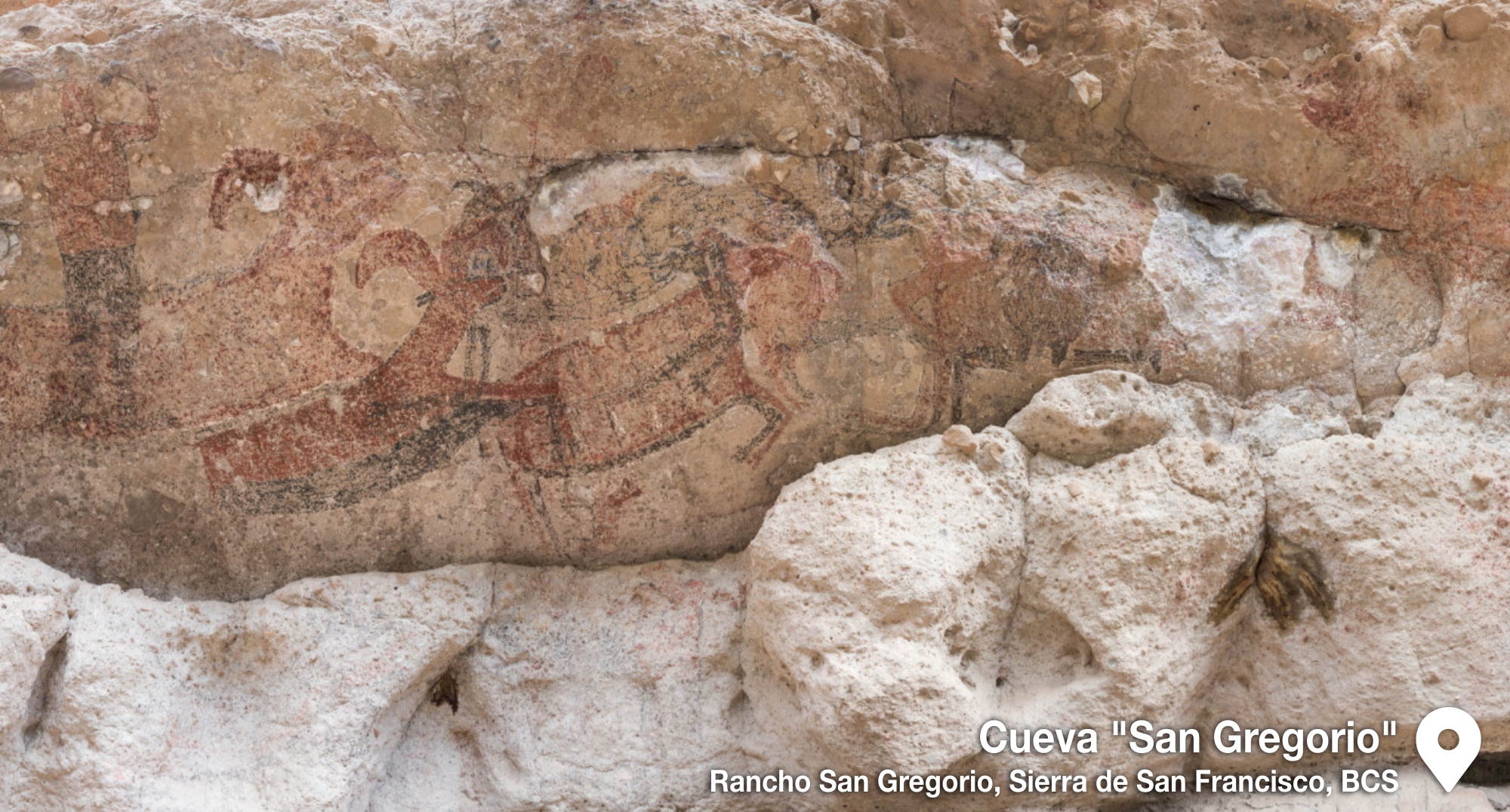San Gregorio

It is located in the Sierra de San Francisco and receives
the name of a ranch that is owned by Francisco Arce, which is located in the
vicinity of this site. In the words of Enrique Hambleton, a South Californian
who has distinguished himself in the tasks of diffusion and conservation of
cave paintings, these ranchers like Francisco Arce have been and are until today
“the first line of defense” of that cultural heritage that belongs to everyone
Mexicans, but that is also of equal belonging to citizens of the rest of the
world. The latter is confirmed by the inclusion of the cave paintings of the
San Francisco mountain range in the Unesco world heritage list from the year
1994. With this, Mexico acquired the serious international responsibility to
carry out all the necessary actions to ensure conserve, investigate and
disseminate for the benefit of humanity.
Very close to there are some other sites that are part of
the same Sierra de San Francisco pictorial style, which have been dated to
several millenniums old. Among them it is worth mentioning the cave of La Palma
with more than 3,245 years before the present, and the cave of San Gregorio II,
with 3,000 years before the present.
THE TRADITION OF
PINTAR
The dates of the sites of La Palma and San Gregorio II, plus others that we have already referred to, such as that of San Borjita with an age of 7,500 years, are those that have invited us to continue considering that the rock paintings of the mountain ranges of San Francisco and Guadalupe were expressing over time a cultural "tradition" of painting and repainting sites that are now full of universal meanings. Some archaeologists have therefore proposed to designate the prehistoric culture that created the cave paintings of the San Francisco and Guadalupe mountains with the name of “Archaic-Great Mural”, since they affirm that this is the main feature of their existence, with a antiquity that goes from 7,000 years before Christ, up to 1,000 years later.
Detalles
Lugar: Mulegé, Mulegé
Dirección: Sierra de San Francisco, Mulegé, Baja California Sur
Página web: Sendarupestre.cultura-bcs.gob.mx

